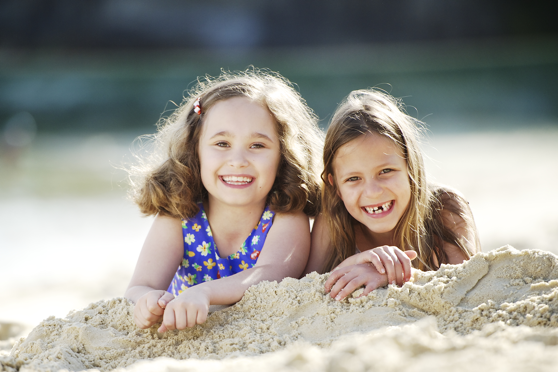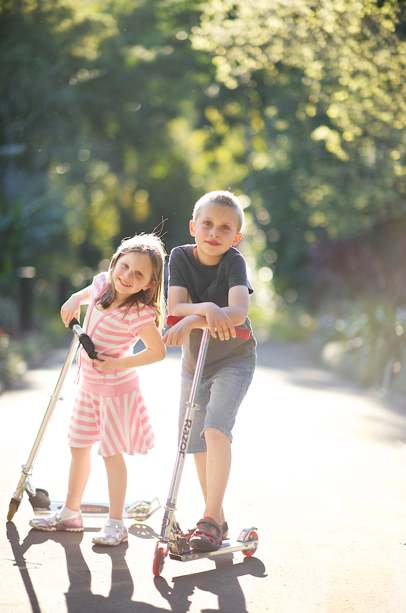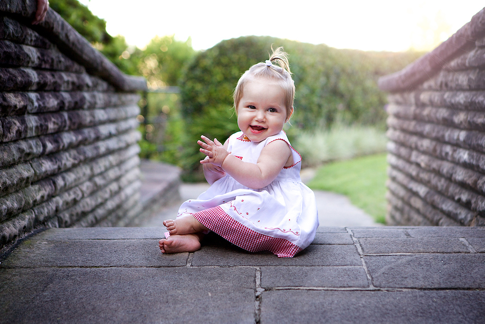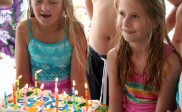How To Take Amazing Photos Of Your Kids
A lot of parents decide to buy an entry-level DSLR camera to make sure they have a nice collection of photos of their kids. Sure, a professional family photographer will be able to take photos which are just that much better, but if you follow some simple tips you’ll be able to take photos of your family which are pretty good, too.
1. Don’t Stand Up.
A photograph of your child will be more captivating if it’s taken from an unusual angle. And the usual angle from which adults see children is from above. So to take a photo of your child which really grabs people’s attention, get down to their level.
When I do family photoshoots, I often spend the whole 2 hours crawling on the ground. For extra effect, try to use your natural environment to shoot up at the kids. Have a look at the photo above – here I also used the natural slant of the beach to get down lower than my subjects.

2. Blur The Background.
Your camera will probably come with a zoom kit lens. When you’re taking a photo, zoom all the way in and walk back until you can get everyone in the shot. This will create a nice blur of your background and make your subjects really stand out. To increase this effect, open up the aperture to it’s maximum and watch the background melt even more. But be careful when you have more than one person in the shot – you might blur things so much that the person behind is also blurry. If you notice that happening, close down the aperture until all your subjects are in focus and the background isn’t.
3. Tell A Story.
A good photograph is one which communicates. It tells a story. Rather than walking around with camera in hand, thinking about shutter speed and, ask yourself:
“What’s the story here?”
If, instead of holding a camera, you were holding a pen and paper, what would you write to share the story of this moment? Your camera is a lot more closely related to a pen and paper than you realise. It’s not a picture-taking instrument. Rather, it’s a story-telling instrument. And there are stories unfolding before your eyes every moment. You just have to pause for a moment and see them.
4. Make Them Feel Comfortable.

Your subjects will not reveal their story to you unless they feel like they can trust you. You have to build a genuine connection with your kids, make them feel safe and comfortable to be around you.
I have found that a lot of the time kids don’t like to have their photo taken just for the sake of being photographed. But they love participate in games and to share what interests them.
For example, before you pick up your camera, talk to your kids about their toys, their friends and their hobbies. At some point you can say, “That’s such a pretty toy! Do you think I can take a photo of you with it – so I can show my friends how amazing your toy is?”
That will create a connection and a relaxed context for your photography session.
5. Keep Backgrounds Clean.

We see photographs on paper or on computer screen in two dimensions. But a photograph is actually a 2-dimentional representation of a 3-dimensional space.
As you’re taking photos, you have to be constantly aware of the 3-dimensionality of the space you’re capturing. And to that effect, you must remember that in every photo there are is a foreground (which is what we tend to focus on) and the background.
The foreground is something that everyone knows about because that’s where you usually find your subjects – your baby, toddler, husband or the whole family.
The background is often neglected. But it’s just as important because it’s instrumental in creating a composition which is pleasing to the eye.
Have a look at the photo above. Here, a bridge was used to create a symmetrical background which frames the subject and keep the viewer’s eye in the center of the photo.
This kind of background is used very often in family photography.
When you’re taking photographs, look for naturally occurring and man-made objects which will help you create that kind of background. It can be things like overhanging tree branches, doorways, windows, corridors, bridges and houses.
All photos by Steven McConnell



